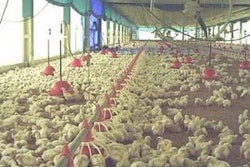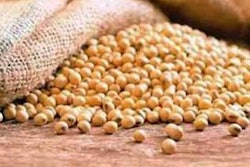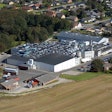
Assessing the level of carryover in a feed production line has been an ongoing challenge for the feed industry, as feed producers have needed a reliable and reproducible method for measuring carryover. Recently, the French feed research center Tecaliman developed such a method, which has been recognized as efficient and has been adopted by European official agencies.
However, developing this method was only a start; Tecaliman is now using what it has learned to take its studies further. It has just launched a pilot plant with special material handling equipment that should give Tecaliman, and ultimately the feed industry, even more insight into cross contamination.
Background
European directive 2009/8/EC gives limits to cross contamination for coccidiostats in feed plants. It must be lower than 3% in target feed and lower than 1% for non-target feed or feed for exportation. In France, good manufacturing practices have been written to ensure feed quality, so French feed manufacturers must follow both guidelines. The goal of the GMP guidelines is a variation coefficient of mixing below 5% for conformity and below 10% for acceptability. The ultimate goal is cross contamination of less than 5% for normal feed and less than 1% for finishing feed. More generally speaking, the European directive 183/05/EC for feed hygiene requires producers to demonstrate the control of homogeneity of their mixing and to apply Hazard Analysis and Critical Control Points on additive utilizations.
Many plants produce different products that include incompatible ingredients or additives that must not go in another formula. Since the presentation of the greatest part of these products is powder, the plant can't use a washing procedure that utilizes water. “Between formulation complexity and low added values, the methods to fight carryover are quite scarce,” Fabrice Putier, director of Tecaliman, said.
The method
To comply with the requirement for such a low level of carryover and to avoid any discrimination from one plant to another regarding control, Tecaliman determined the best way was to control with the same efficiency and thus, the same method. Tecaliman then wrote rules for cross contamination validation based on manufacturers’ trials and tests.
Tecaliman’s first step in developing these rules was to find a tracer that complied with the scientific obligation of precision and the manufacturing necessity of cheap measurement. Then, it practiced the method on feed plants. This required planning. To apply any measurement on a plant, one must block out time for it – from 1.3 hours for mixing control to 5 hours for an all-plant control (until loading). It must be planned, for example, during the annual control of the line.
The method required that there be two batches containing tracer (TB for “tracer batches”) and two batches without tracer (CB for “collecting batches”). Then samples are taken and tracer is extracted before dosage was performed by colorimetric analysis. For mixer testing, the concentration of tracer must be similar to additives or drug concentration in formula. For cross contamination measurement, the very low level of detection is determinant.
“One major point is that one must be able to measure a 0.5% contamination,” Putier said. “To be accurate when looking for carryover, you must detect a very low level of trace. One of the advantages of this method is that its accuracy increases with the size of the sample.”
With a quantification level of 1 part per million, the tracer incorporation in the TB must be 200 ppm minimum. So, for an incorporation of 100 ppm in the TB, the quantification level would be 0.5 ppm.
Search for a suitable tracer
When choosing a tracer, one can choose between an internal tracer (particles or molecules normally contained in a formula) and an external tracer (not in the recipe). In either case, the tracer must possess certain qualities. It must not be toxic, should have a low detection level, good repeatability and its analysis must be inexpensive. It should also be usable in all or nearly all kinds of feeds, and be stable, meaning there is no change in tracer composition for the results to be comparable through time.
And last but not least, the “contamination” from this tracer must come only from the amount of it added during the trial (no “contamination” of feed by another source of the same tracer).
“We tried several tracers and found RF-Blue Lake with a particle size of 100 micrometers,” Putier said. “The inclusion rate is 250 g/t and colorimetric analysis that is performed to measure the traces is cheap. Neither the addition of liquids nor pelleting has any influence on the dosage of this tracer. We were able to work with the supplier (U.S.-based Micro-Tracers Inc.) to improve its product. It is now finer (less than 100 microns) and protected against heat treatment (mainly pelleting) as well as against migration in water added during feed production by double coating.”
Current use
With this method, Tecaliman was able to chart the improvement of mixing quality of French factories as soon as the year 2000. The median coefficient of variation is now near 4% and seems to be remaining stable. Regarding carryover, the median contamination level has decreased from 5.5% in the first CB in 2000 (64 plants were part of the trial) to less than 3% in 2008. The results were even better for the second collecting batch where the cross contamination was around 0.5%.
However, researchers still have a lot of work to do to understand why carryover tends to happen with certain molecules in certain situations. That is why Tecaliman invested last year in a pilot installation dedicated to powder behavior during mechanical handling. “We want to understand product deposits; the influence of process, equipment design and/or equipment material, speed of rotation or interaction due to the formulation itself. Understanding particle behavior and the powder-liquid link in feed is surely one of the new frontiers for feed technology,” Putier said. One of his hopes is to predict the reasons for powder thickening in storehouses which has been, until now, impossible to anticipate.


















